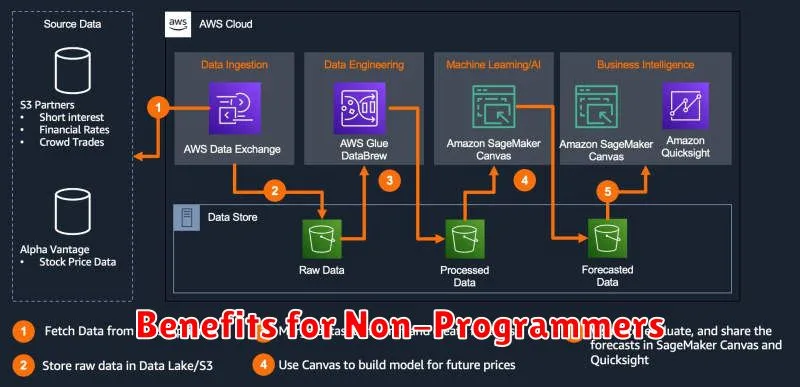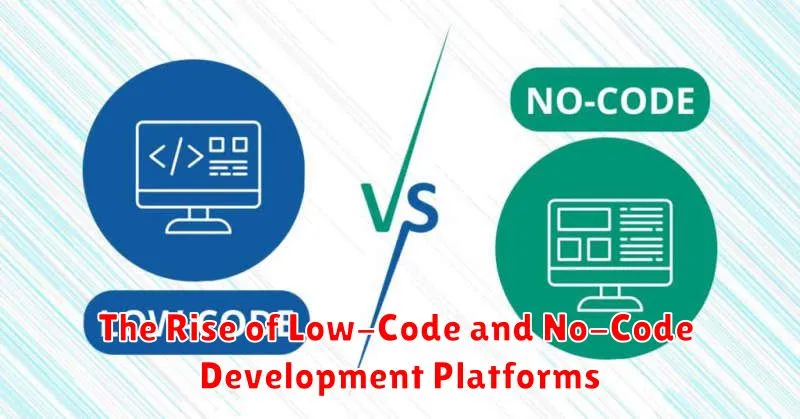The software development landscape is rapidly evolving, with low-code and no-code development platforms experiencing a surge in popularity. These innovative platforms empower individuals and businesses to create custom software applications with minimal or no traditional coding, democratizing software development and accelerating digital transformation. The rise of low-code and no-code platforms is driven by factors such as the increasing demand for software solutions, the shortage of skilled developers, and the need for faster development cycles. Understanding the capabilities and potential of these platforms is crucial for staying competitive in today’s dynamic market.
This article explores the burgeoning field of low-code and no-code development, examining the benefits, challenges, and future implications of these disruptive technologies. We will delve into the key features and functionalities of low-code and no-code platforms, highlighting their potential to empower citizen developers and streamline application development processes. Furthermore, we will analyze the impact of these platforms on businesses of all sizes, from startups to enterprises, and discuss how they are reshaping the software development industry as a whole.
What Are Low-Code and No-Code Platforms?
Low-code and no-code platforms are software development tools that allow individuals to build applications with minimal or no traditional hand-coding. They provide a visual interface with drag-and-drop components and pre-built modules, streamlining the development process.
Low-code platforms cater to developers with some coding experience, offering flexibility to customize applications through scripting and integrations. This makes them suitable for more complex applications that require specific functionalities.
No-code platforms, on the other hand, are designed for business users or “citizen developers” with little to no coding knowledge. They focus on simplicity and ease of use, enabling rapid development of basic applications.
Benefits for Non-Programmers

Low-code/no-code platforms empower non-programmers to create functional applications without needing extensive coding knowledge. This democratizes software development, enabling individuals across various departments to contribute to digital transformation initiatives.
These platforms offer intuitive visual interfaces with drag-and-drop functionality, simplifying application design and development. This reduces the time and cost associated with traditional software development, allowing for faster deployment and quicker realization of business value.
Non-programmers can automate tasks and workflows, streamlining operations and increasing efficiency. They can build custom solutions tailored to their specific needs, eliminating reliance on complex and often inflexible off-the-shelf software.
Popular Tools You Can Try
Exploring low-code/no-code platforms? Here are a few popular options to consider:
For web application development:
- Webflow: Focuses on visual development and design.
- Bubble: Enables complex application builds without coding.
For business process automation and integrations:
- Zapier: Connects apps and automates workflows.
- Make (formerly Integromat): Offers powerful visual automation tools.
For mobile app development:
- Adalo: Drag-and-drop interface for creating native mobile apps.
- Buildfire: Provides a platform for building custom mobile experiences.
Limitations to Be Aware Of
While low-code/no-code platforms offer significant advantages, it’s crucial to acknowledge their limitations. Vendor lock-in is a potential concern, as migrating away from a specific platform can be challenging.
Customization options, while often extensive, can be limited compared to traditional hand-coding. Highly complex or unique functionalities might be difficult or impossible to implement within the platform’s constraints.
Scalability can also be a limiting factor. While some platforms offer robust scaling capabilities, others may struggle to handle large datasets or high traffic volumes. Careful consideration of future growth is necessary when selecting a platform.
Use Cases Across Industries
Low-code/no-code platforms are transforming businesses across various sectors. Their versatility allows for rapid development and deployment of applications, addressing specific industry needs.
Healthcare: Streamlining patient onboarding, managing medical records, and automating administrative tasks.
Finance: Building customer portals, automating loan processing, and creating fraud detection systems.
Retail: Developing personalized shopping experiences, managing inventory, and creating targeted marketing campaigns.
Manufacturing: Optimizing production processes, monitoring equipment performance, and managing supply chains.
Will They Replace Traditional Coding?
The short answer is: not entirely. While low-code/no-code platforms are rapidly gaining traction, they are unlikely to fully replace traditional coding in the foreseeable future. These platforms excel at simplifying and accelerating the development of specific types of applications, particularly those with standard functionalities like basic web and mobile apps, or automating business processes.
However, highly complex systems, cutting-edge technologies, or situations demanding bespoke functionality still require the flexibility and control offered by traditional coding. Think of highly customized applications, intricate backend systems, or emerging technologies like AI/ML integration—these areas remain the domain of skilled programmers.
Instead of replacement, the more likely scenario is augmentation. Low-code/no-code platforms empower citizen developers and streamline certain development tasks, freeing up traditional coders to focus on more complex and specialized projects. This synergy creates a more efficient and productive development landscape overall.

